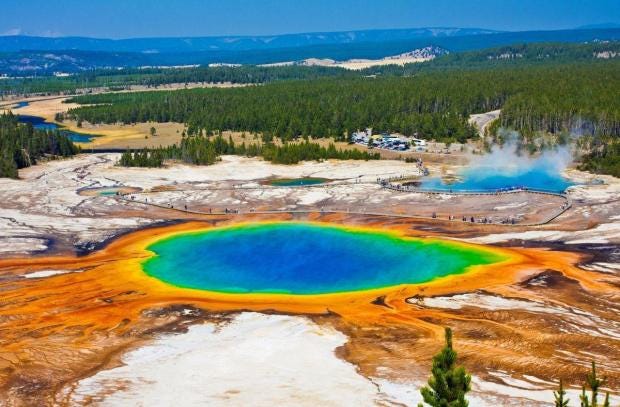
The massive volcano sitting beneath Yellowstone National Park could erupt sooner than previously expected, scientists studying the area say.
Researchers have found that, during previous eruptions, there were changes in temperatures that led to the blast that occurred much quicker than we knew before. Those scientists were able to determine the accelerated rate of temperature change by analyzing minerals in fossilized ash.
A powerful eruption occurred roughly 630,000 years ago, according to National Geographic, shaking the region and creating the Yellowstone caldera — a bowl about 40 miles wide the encompasses much of the park. Researchers at Arizona State University analyzed evidence form that eruption, and believe that the super volcano was awoken after two influxes of fresh magma flowed into the reservoir beneath that caldera.
But, while the volcano could have devastating consequences if it were to erupt, nobody need worry just yet. The accelerated timeline shows that the temperatures around the volcano increased over a period of decades, instead of the centuries that scientists believed it would take for the super volcano to make that kind of transition.
“It’s shocking how little time is required to take a volcanic system from being quiet and sitting there to the edge of an eruption,” Hannah Shamloo, the study’s co-author, told the New York Times.
So, what would happen if volcano were to erupt tomorrow? Depending on the size of the eruption, the volcano could cover major portions of the United States in dangerous ash, and the Earth’s atmosphere would likely be filled with that same ash.
Ash in the atmosphere would cool the planet, but could be devastating to life on Earth if it did not dissipate quickly.







